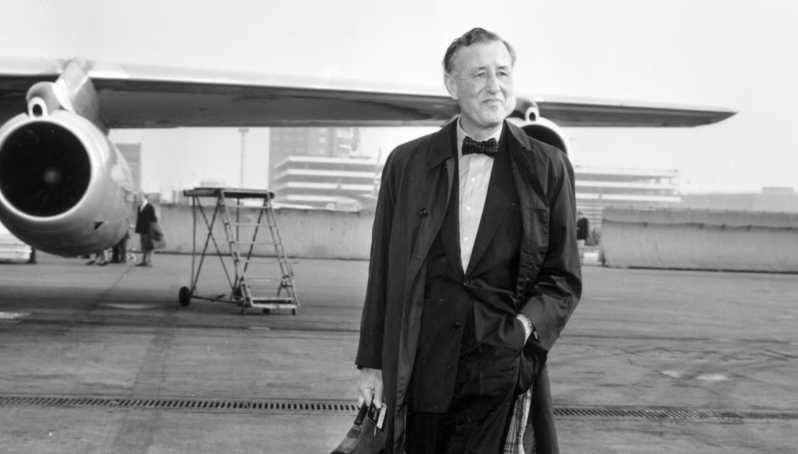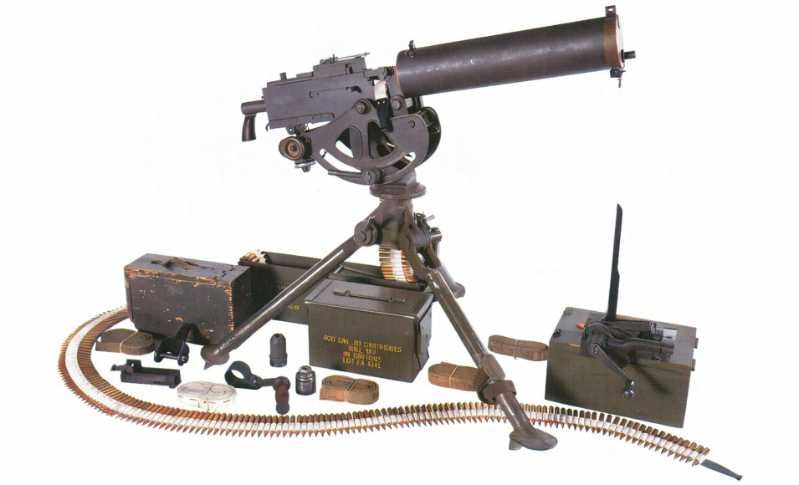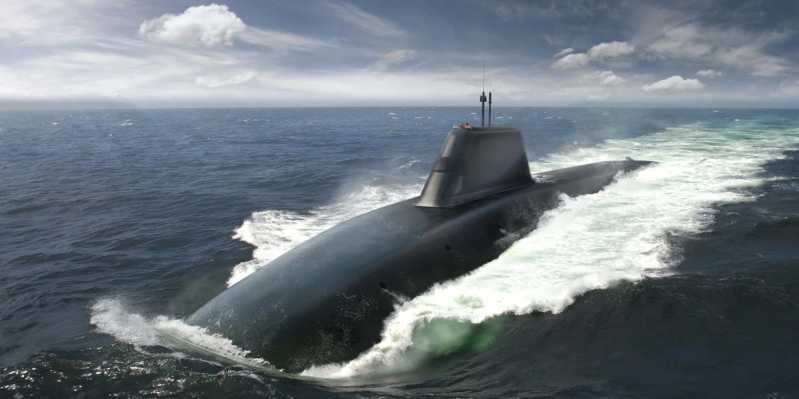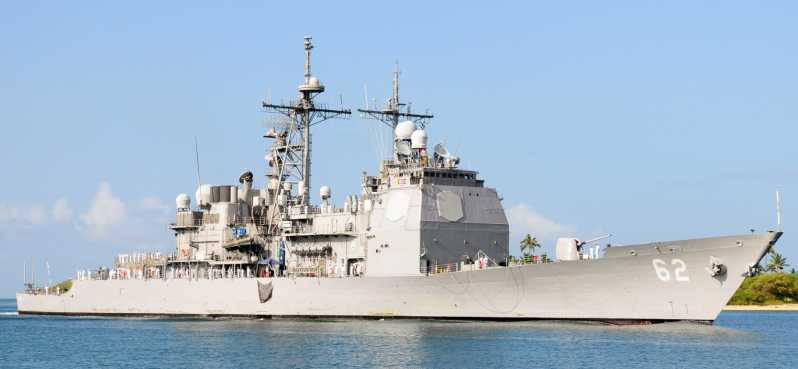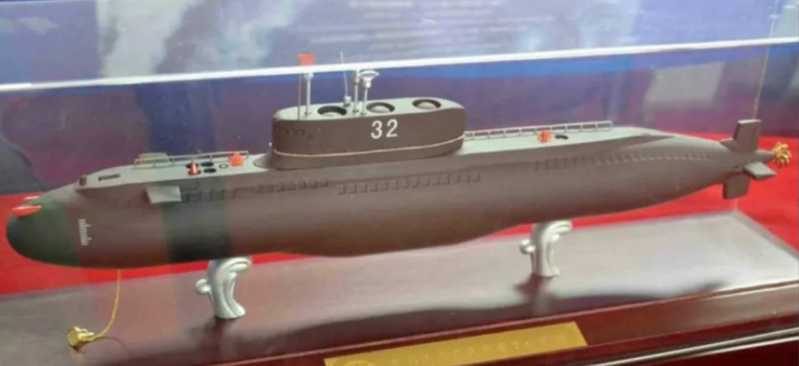From novels to movies, the ever-popular "007" series of spy stories has portrayed a vivid and complex world of spies and agents for readers and audiences around the world. The man who created "007", Ian Fleming, is the "007" in the real world.
Fall in love with writing
Why does Ian Fleming’s protagonist, the famous British spy James Bond, seem so real? Why is Fleming’s "007" series so fascinating? This is because Fleming’s creative material comes from his own life. During World War II, Fleming had been engaged in secret intelligence work against Nazi Germany.
Ian Fleming was born on May 28, 1908 in a wealthy London family. His father, Valentine Fleming, was a very successful Scottish financier. In 1915, Valentine sent Ian and his elder brother Peter to a boarding school for the nobility called Dumford, while Valentine himself joined the British Expeditionary Force with the rank of major in the British Army and went to France to fight.
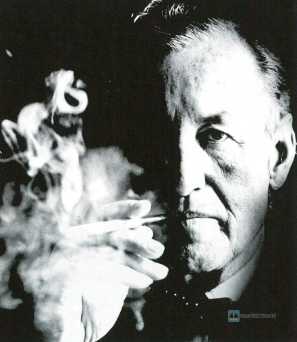
In Dumford, Ian fell in love with reading, which would be his lifelong interest. He especially liked to read action novels and stories that happened in distant places. On May 20, 1917, the bad news came that Colonel Valentine was killed in France (Winston Churchill, then British Minister of the Navy, also wrote a memorial for him). It was a week before Ian’s 9th birthday.
After experiencing drastic changes in life, Ian and Peter were both admitted to Eton College in 1921. Although it was a famous elite institution in the UK, Ian was very unhappy there. The only course that attracted him was track and field. In 1926, Ian joined the famous Royal Military Academy Sandhurst, but like in Eton, the pace of Sandhurst was not to Ian’s liking.
Ian chose to leave and went to Kitzbühel, Austria to continue his studies at a school there. In the pleasant environment of green mountains and fresh air, Ian spent more time on writing and began to show his talent in this area. After graduation, Ian returned to the UK and joined Reuters with the help of his family resources. Under the training of senior editor Bernard Holt, he further improved his writing skills and worked in many newspapers successively, constantly enriching his life experience.
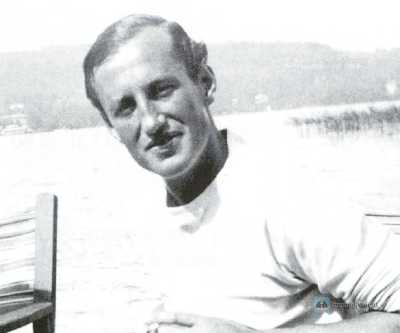
Joining "No. 39"
On the eve of World War II, Ian Fleming was already a senior reporter of the London Times. With a series of important reports written during his visit to the Soviet Union, his name attracted the attention of senior military and political figures. After returning from the Soviet Union, Ian worked as a stockbroker in London for a while, but he did not like this job, and a new change soon came. The British intelligence department found him.
Not satisfied with obscurity, Ian was happy to accept the challenge. He joined the British Naval Intelligence Agency (NID) and became the personal assistant of the director, Admiral John Godfrey. Ian’s office was called "No. 39", which was the intelligence collection center of the British Royal Navy, which allowed Fleming to access a lot of maritime secrets of this maritime power.
Admiral Godfrey was very satisfied with Fleming and praised his new assistant on many occasions. In a formal report, he said: "Ian completed the tasks assigned to him. His scope of responsibility was not clearly defined, and he still achieved great success." Fleming’s code in "No. 39" was "I-7F". After the war, he recalled this work experience and wrote: "This is a secret channel to deal with any matters related to subversion, sabotage, and conspiracy, including those foreign confidential missions that usually only appear in novels."
Fleming’s rank when he joined "No. 39" was captain, but with his outstanding performance, he was soon promoted to lieutenant colonel. Interestingly, in the novels he later created, James Bond was also a lieutenant colonel. Godfrey soon assigned Ian a new task. He would coordinate operations on behalf of the NID with the Operational Intelligence Center (OIC), the Secret Intelligence Service (SIS), the Political Warfare Executive (PWE) and the Joint Intelligence Committee (JIC).
During this period, Fleming established a friendship with his colleague, an Australian pilot, Sidney Cotton. The latter had flown to ports in northern Germany many times to take pictures of the German Navy. In order to better obtain intelligence, Cotton modified his aircraft and installed an aerial camera on the fighter’s fuselage. On the wing. Fleming soon joined in, and the two often collided with strange ideas, and the "untested intelligence tools" they discussed later became the prototypes of various novel props in "007".
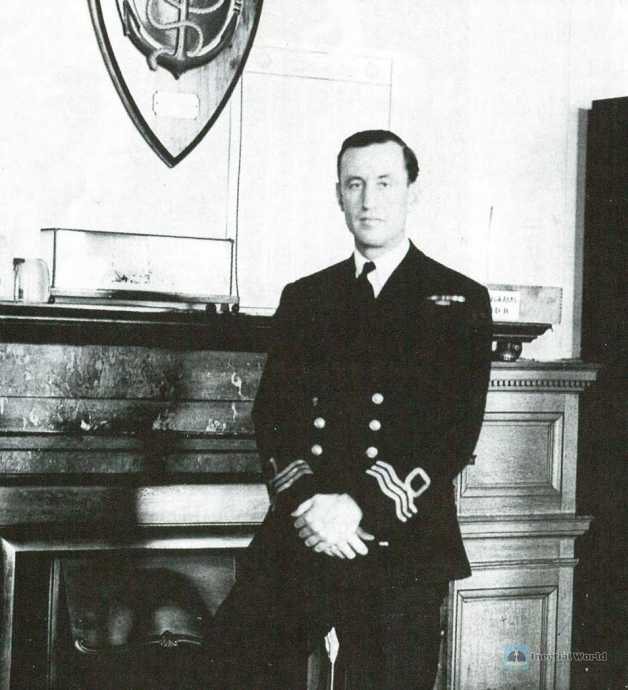
"Dirty Tricks" Organization
At that time, one of the NID’s work focuses was to prevent the Danube River from falling into the hands of the German Navy. This river was the main shipping route for the Germans to enter the important oil-producing areas of Romania. For this reason, the British intelligence department established the MI agency, which was nicknamed " The "Dirty Tricks" organization, and Fleming became the contact person of the MI agency.
Under Fleming’s coordination, an Anglo-Indian shipping company successfully "chartered" Romanian barges on the Danube, preventing the Germans from using these ships. In another operation, the "Dirty Tricks" organization attempted to sink several concrete barges in the Danube River between Yugoslav and Romanian ports. Fleming cooperated with Merlin Minshar, the British vice-consul in Bucharest, with the former responsible for coordination and the latter responsible for the operation site.
Minshar took a speedboat with the concrete barge The fleet was in the process of sailing, but during the operation, it encountered a Romanian water patrol. Minshar’s speedboat ran out of fuel, and he managed to escape on another speedboat while the patrol was chasing him. The Danube operation planned by the British intelligence department ultimately failed, but Fleming later said that Minshar’s action was "a moment that would make 007 proud."
As Fleming continued to accept new missions, his friends in the intelligence circle continued to increase, and many adventurous characters entered his life, and their deeds were later more or less written into the story of James Bond by Fleming. According to Andrew Lihant, the biographer of Ian Fleming, three of them are the prototypes of the Bond character: Michael Mason, Wilfred Dunderdale and Alexander Glenn.
Mason was a Canadian boxer and an excellent hunter who served the British intelligence department during the war. Lieutenant Colonel Dunderdale worked for the Secret Intelligence Service and played an important role in the British plan to obtain the Enigma cipher machine, which was then classified as top secret by Germany. Glenn was the British Assistant Naval Attaché in Belgrade and provided assistance to Fleming during Operation River.
From Washington to Madrid
After the Western Front campaign began in 1940, Admiral Godfrey sent Fleming to France to assess the situation there. Fleming stayed there for two weeks. As the German army approached, Fleming and other members of the British mission had to burn all important documents and leave France. After that, Fleming went to Britain and participated in the secret operations of the British Naval Intelligence Department along the Suez Canal.
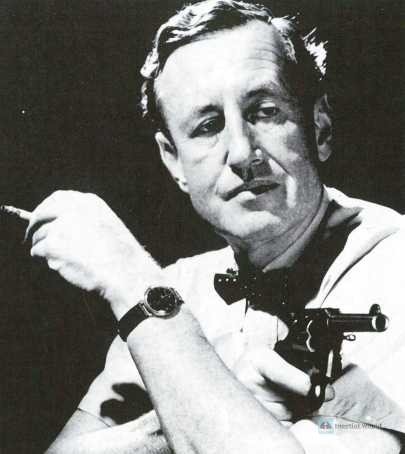
The following spring, the United States and Britain decided to share intelligence during the war. Only a few people in the Roosevelt administration knew about this arrangement, and even Congress did not know. In order to properly promote this matter, Churchill asked Godfrey to take Ian Fleming to Washington in May 1941. In the US capital, the two contacted William Stephenson, codenamed "Dauntless", who was in charge of the British Security Coordination (BSC), a secret British spy organization in the United States. Fleming learned a lot from Stephenson. After that, under the coordination of William Wiseman, a famous British spy chief, Godfrey held a private meeting with President Roosevelt to discuss the specific arrangements for US-UK intelligence coordination. This meeting laid the foundation for intelligence cooperation between Britain and the United States during the war, and Fleming was one of the participants.

The next arrangement of the British was to visit Edgar Hoover, director of the FBI. Hoover did not like the two visitors. He felt that they were ready to interfere in his territory. Out of courtesy, Hoover still took Godfrey and Fleming to visit the FBI shooting range and forensic laboratory, but as soon as the meeting ended, Hoover immediately sent Godfrey and Fleming out the door. During the rest of their time in Washington, Godfrey and Fleming held talks with many heavyweights in the US military and political circles. The two worked day and night to provide a lot of help to the US intelligence department. Fleming also wrote two important memoranda on how to create a new US intelligence agency.
After returning to Britain, Fleming showed his eclectic approach in the interrogation of German prisoners. Instead of facing several captured German submarine officers in the interrogation room, he took them to a luxurious restaurant in London, where they were provided with excellent meals and high-quality wines. In return, Fleming successfully heard a lot of important German naval information from a submarine officer who was too drunk to care about the occasion.
In the second half of 1941, Fleming embarked on another trip to the Mediterranean, mainly to prepare for Hitler’s possible invasion of Spain. Fleming went to Madrid, Lisbon and Gibraltar, and in the process planned a secret operation codenamed "Golden Eye". The content of this operation was to carry out various obstructions and sabotage on the invaders’ supply lines after the German army attacked Spain. Since Germany did not invade Spain, the "Golden Eye" operation became unnecessary. However, many years later, a "007" movie was named "Golden Eye".

"Red Indian"
Fleming also participated in one of the most successful deception operations in World War II. At "No. 39", Fleming and his colleagues in the intelligence department developed a plan to convince the Germans that the Allied landings in 1943 would take place in the Balkans, not Sicily, Italy. Intelligence officers placed the body of a drowned British naval officer on the coast of Spain, disguising him as a victim of a plane crash, and the body was carrying the Allied landing plan for the Balkans. The Germans were completely fooled.
During the war, Fleming also received secret training at the Special Operations Executive (SOE) camp on the north shore of Lake Ontario in Canada. This camp is responsible for all-round training of agents who are about to go undercover in Europe. Here, agents will master various special skills such as silent killing, hand-to-hand combat, blasting, parachuting, forging documents, and using invisible ink. There is no doubt that the experience during this period allowed Fleming to portray "007" in a full and three-dimensional way.
After returning to the UK, Fleming started a new job to support the upcoming Normandy landing. He worked with Oxford University to create a large military library to provide intelligence and information to the staff who formulated the landing plan.
After the Allied counterattack on the European continent, Fleming was in charge of a secret spy organization called "Commando 30" or AU-30 in the Navy Intelligence Department. AU-30’s personnel were recruited from all walks of life and were called "Red Indians". They had received special training but had no military background.
After the Allies entered northern France, Fleming began to carry out the important task of destroying the German submarine bases on the French coast. In a daring raid, 12 members of AU-30 destroyed several submarines docked in Cherbourg Harbor, destroyed local radar facilities, and even captured 300 German soldiers along the way.
As the war progressed to Germany, Fleming’s men entered the important German port city of Kiel. There, Fleming and others seized several highly complex new weapons of the German Navy that were still under construction, including a single-person submarine and a coastal demolition device called "Cleopatra" by the British.
The "Red Indians" also occupied the German Navy’s Operational Science Department, which preserved all the German Navy’s combat archives in World War I, some of which dated back to 1870 during the Franco-Prussian War. Fleming personally led a team to catalog these important historical archives and transferred them to London for safekeeping.
The Birth of James Bond
On November 10, 1945, shortly after the end of the war, Ian Fleming retired from the British Navy. He first worked as an external relations manager for the Kemsley newspaper chain, then traveled around and wrote a series of articles about pirate treasures. Later, at the suggestion of oceanographer Jacques Cousteau, Fleming bought a cottage on the sunny Caribbean island of Jamaica and called it "Golden Eye".

In "GoldenEye", Fleming entered a semi-secluded life, facing the blue sea outside the window, he began to write spy novels. Fleming decided to designate the code name of the protagonist of his novel as "007", and this code name was not picked up casually, but had a historical basis in the field of military intelligence, that is, the famous "Zimmermann Telegram Incident" during the First World War
At that time, British code breakers deciphered the diplomatic secret telegram sent by German Foreign Minister Arthur Zimmermann to the German ambassador to Mexico, which detailed the German army’s new policy of unrestricted submarine warfare against the United States. Zimmermann also said that if Mexico could cause trouble for the United States and help Germany win the war, Germany would strive to take New Mexico, Arizona and Texas. Parts of the territory were returned to Mexico. This event is believed to have accelerated the process of the United States joining the First World War. The Germans at the time assigned the digital number 0070 to these diplomatic materials.
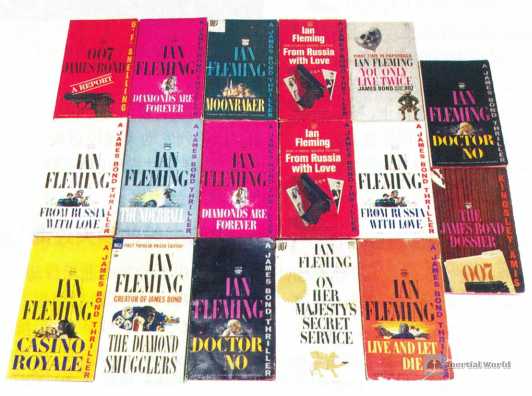
When Fleming’s first novel, "Casino Royale", was published, British agent "007" James Bond became a hit. Because many of Bond’s adventures were based on Fleming’s own wartime experiences, the novel "showed a sense of reality that had never been seen in similar works at the time."
Fleming wrote more Bond adventures after that, but alcohol and tobacco continued to worsen his health. On August 12, 1964, Fleming died of a heart attack caused by bad living habits at the age of 56.


